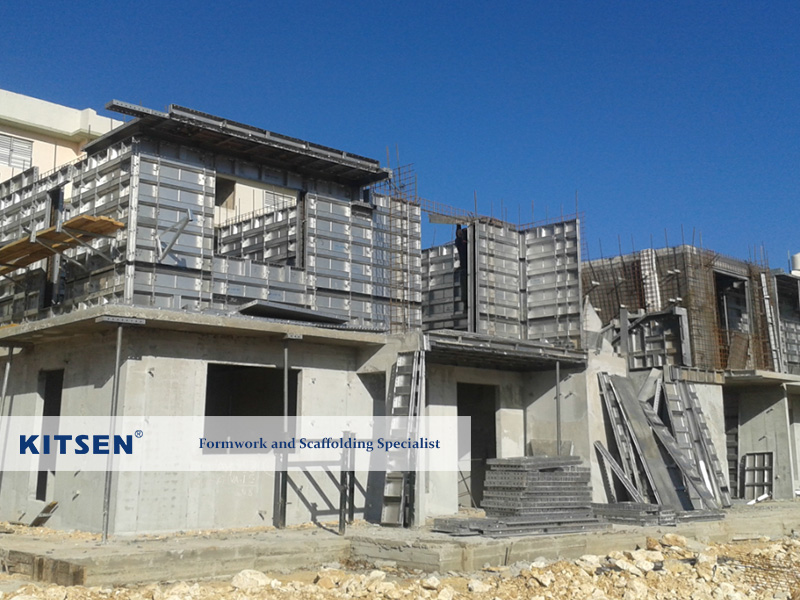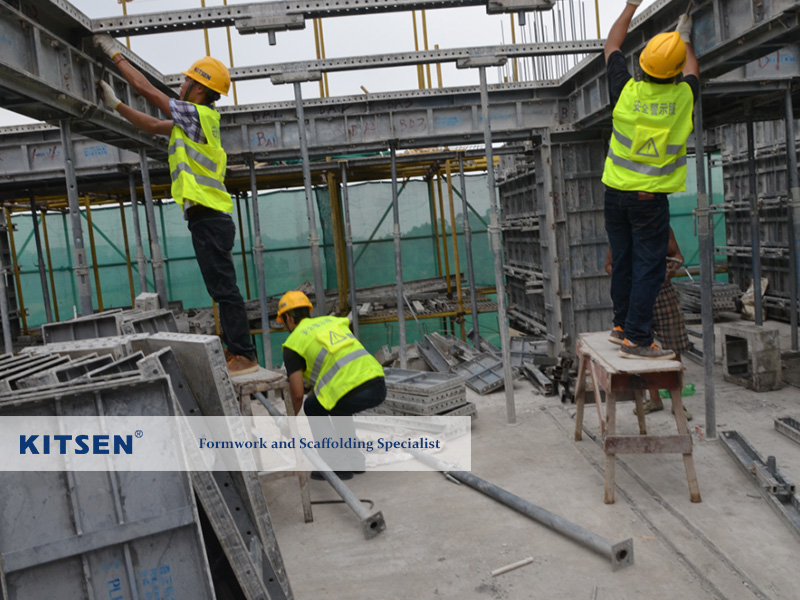Fengwei Shan, Beiguan Town, Yangjiang,China
zip code :
529932phone :
+86 13160522883Fax :
+86 13160522883Email :
esales@kitsen.com
Fengwei Shan, Beiguan Town, Yangjiang,China
zip code :
529932phone :
+86 13160522883Fax :
+86 13160522883Email :
esales@kitsen.comIn the realm of construction, formwork systems play a pivotal role in shaping the structural integrity and aesthetic appeal of buildings. Two of the most commonly utilized formwork systems are aluminum formwork and steel formwork. Each system boasts its unique advantages and limitations, making it crucial for builders and contractors to carefully weigh their options before making a selection. This essay delves into a comparative analysis of aluminum and steel formwork, highlighting their respective characteristics, advantages, and disadvantages.

Composition and Material Properties:
Material Properties: Aluminum is renowned for its lightweight nature, corrosion resistance, and high strength-to-weight ratio. It offers excellent form stability during concrete pouring, ensuring precise results.
Material Properties: Steel boasts unparalleled strength and durability, capable of withstanding significant loads and pressures. However, its weight can pose challenges during transportation and installation.
Handling: The lightweight nature of aluminum makes it easy to transport and store, minimizing labor costs and enhancing on-site mobility.
Handling: The weight of steel formwork necessitates careful handling and specialized equipment, increasing overall operational costs and time.
Reusability: Aluminum formwork can be reused up to 300 times, with a low return rate, making it a cost-effective solution in the long run.
Reusability: Steel formwork can be reused around 100 times, but its higher return rate and potential for more significant modifications reduce its overall reuse efficiency.
Operational Savings: However, its ease of installation, handling, and high reusability lead to significant cost savings over time.
Operational Savings: While steel formwork is durable, its weight and installation requirements can offset some of the savings achieved through reuse.
Aluminum is a highly recyclable material, with a low environmental footprint. Aluminum formwork contributes to sustainable construction practices.
Steel is also recyclable, but its production and disposal processes can have a more significant environmental impact compared to aluminum.
Both aluminum and steel formwork systems offer distinct advantages in construction. Aluminum formwork excels in terms of lightweight, ease of handling, installation speed, and reusability, making it a popular choice for modern construction projects. Steel formwork, on the other hand, provides unmatched strength and durability, suitable for heavy-duty applications. Ultimately, the choice between aluminum and steel formwork depends on the specific requirements of the project, budget considerations, and the contractor's preference. A comprehensive analysis of these factors will help ensure the selection of the most suitable formwork system for any given construction project.


Copyright © 2020 KITSEN Scaffold&Formwork Official All Rights Reserved.粤ICP备20064098号
XMLthe professional team to service !